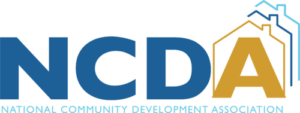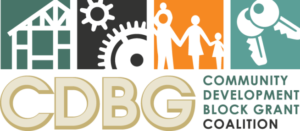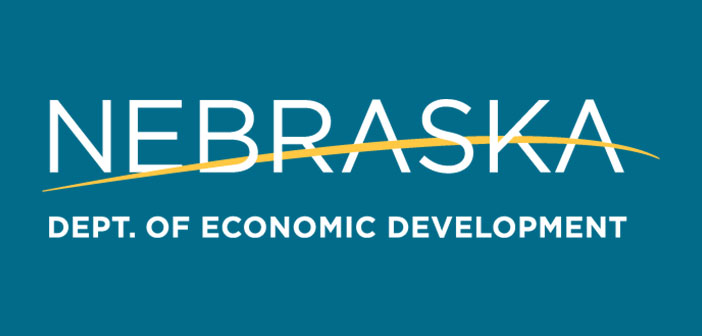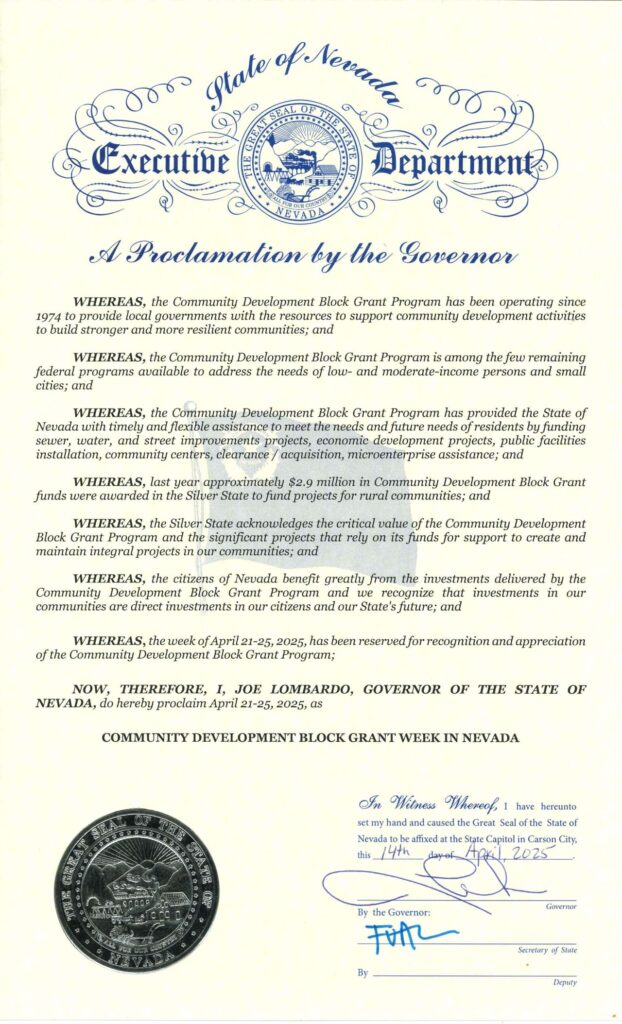


National Community Development Week was created in 1986 by the National Community Development Association (NCDA) and several other national organizations to bring national attention to the Community Development Block Grant (CDBG) program through grassroots support at a time when the program was facing scrutiny by Congress. National Community Development Week also provides the opportunity to support the HOME Investment Partnerships (HOME) program.
The main objective of National Community Development Week is the education of Congressional members on the importance of CDBG and the HOME programs, their local impact, and, most importantly, the need for increased program funding. National Community Development Week is intentionally held during the Congressional appropriations process so that the significance of these programs can be imparted to Congressional members through local activities conducted by grantees and program partners at the grassroots level.
Goals of National Community Development Week
Sign your organization onto the CDBG Coalition's annual letter in support of CDBG program funding. In Fiscal Year 2026, the coalition is requesting $4.2 billion (an increase from $3.3 billion in FY25). Click the envelope above to view the letter.
The passage of a National Community Development Week proclamation signed by your Governor or other state officials is an effective first step in making the public, Congress, and media aware of the need for CDBG and HOME.
Invite key state, local, and federal stakeholders to tour projects completed with support from CDBG and HOME funding. Select projects that positively showcase the programs. Develop a written description to hand out during the tour.
Showcase project examples on your agency's website and social media accounts. Share these projects with COSCDA so we can amplify their reach to a national audience.
Develop state program fact sheets that outline program accomplishments and program needs. Share these with your Congressional delegation, the media, and other program supporters.
Work with your agency's communications staff to develop a press release. Send it to local media outlets and to your Congressional delegation.
The CDBG and HOME program stories cannot be told without incorporating the testimony of the many subrecipients and beneficiaries who are served through the programs. These organizations and units of local government are on the front lines of providing and receiving program assistance. They are essential to relaying program impact. Put a face on your programs by including beneficiaries and subrecipients in your events.

Governor Kay Ivey signed a proclamation to recognize Community Development Week.

Governor Pillen proclaimed April as Community Development Month in Nebraska during the annual "Showcase Community" event.

Governor Lombardo signed a proclamation designating Community Development Week in Nevada.
What has CDBG accomplished? (from FY025-FY23)
What support does the program need?
The CDBG program has never been adjusted for inflation in the entire 50-year period of the program, even though local activity and operating costs increase annually. The program’s inaugural funding level of $2.4 billion (1974) is the equivalent of $13.9 billion in 2024. The number of grantees receiving CDBG funding has grown from 594 in 1975 to more than 1,245 today, further exacerbating the need for increased program funding.
The CDBG Coalition is requesting $4.2 billion for the CDBG Program in Fiscal Year 2026 – an increase from the $3.3 billion Congress provided in FY25.
What is the history of the program?
Congress enacted the CDBG program in 1974 through the Housing and Community Development Act. The program officially turned 50 on August 22, 2024. The Act consolidated eight federal categorical programs into one block grant – CDBG – and developed federal decision making for urban issues to local governments.
CDBG provides funding to communities across the country to address infrastructure, economic development, housing, disaster recovery, and other community needs. The program provides local communities with the flexibility to design and implement strategies tailored to meet local needs and priorities.
What has HOME accomplished? (since 1992)
What support does the program need?
Like CDBG, the HOME program has never been adjusted for inflation even though program demand for affordable housing and program activity and operational costs increases annually. HOME funds are a vital and unique source of financing for numerous affordable housing developments – many of which would not be possible without HOME assistance.
HOME faces threats of funding cuts in the next few fiscal years. The HOME Coalition is requesting $1.5 billion for the HOME Program in Fiscal Year 2026 – an increase from the $1.25 billion Congress provided in FY25.
What is the history of the program?
Congress first authorized the HOME program in 1990 through the Cranston-Gonzalez Affordable Housing Act. HOME is the largest federal block grant to states and local governments designed exclusively to create affordable housing for low-income households.
HOME funds are awarded annually as formula grants to more than 600 participating jurisdictions. HOME funds can be used to support renters and homeowners through new construction, rehabilitation, down payment assistance, and tenant-based rental assistance. HOME funds benefit persons at or below 80 percent of area median income (AMI).